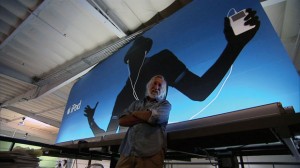
"The Passion of Muhammad Ali," April 1968, "Esquire."
Brilliant, blustery and belligerent, Bronx-born advertising legend George Lois created some of the most iconic magazine covers ever, alongside editor Harold Hayes, for Esquire in the 1960s. They were the kind of uncluttered, political and thought-provoking images that are rarely even attempted today in a magazine world governed by a focus-group mentality. Lois has never been shy about his utter disdain for contemporary magazine covers, but in a new Vice interview, he reveals a few he’s liked. An excerpt.
“Vice: Have you seen a single cover from the past few years that you liked?
George Lois: Once in a while, and it really thrills me.
The New Yorker did two or three terrific covers over the last couple of years that really nailed what was going on. That terrific drawing of Obama and Hilary Clinton in bed together, answering the phone, was fucking good. David Remnick is a fan of mine. We had lunch once and he said, ‘Do you think I should do some photographic covers?’ I said, ‘What? Are you fucking nuts? You’re the only mag that stands out or has a chance of standing out! You don’t fill it with blurbs; you have drawings, which in many cases are whimsical and sweet. That’s terrific, but you should do a cover about something that happened last Thursday. Have somebody come up with a great idea on Friday, and then it comes out the next Monday. You’ll nail what happened!’ Then he did three or four of them, and I said, ‘Jesus Christ, somebody’s listening to me!’ But that’s about it.”




